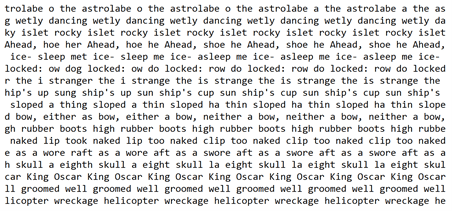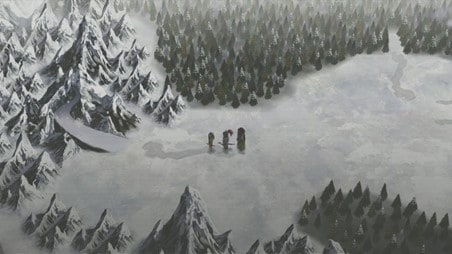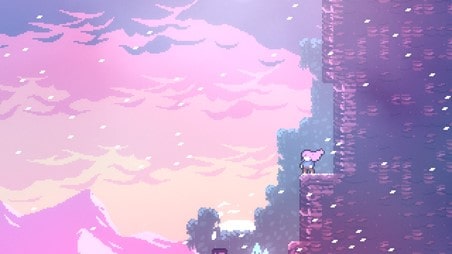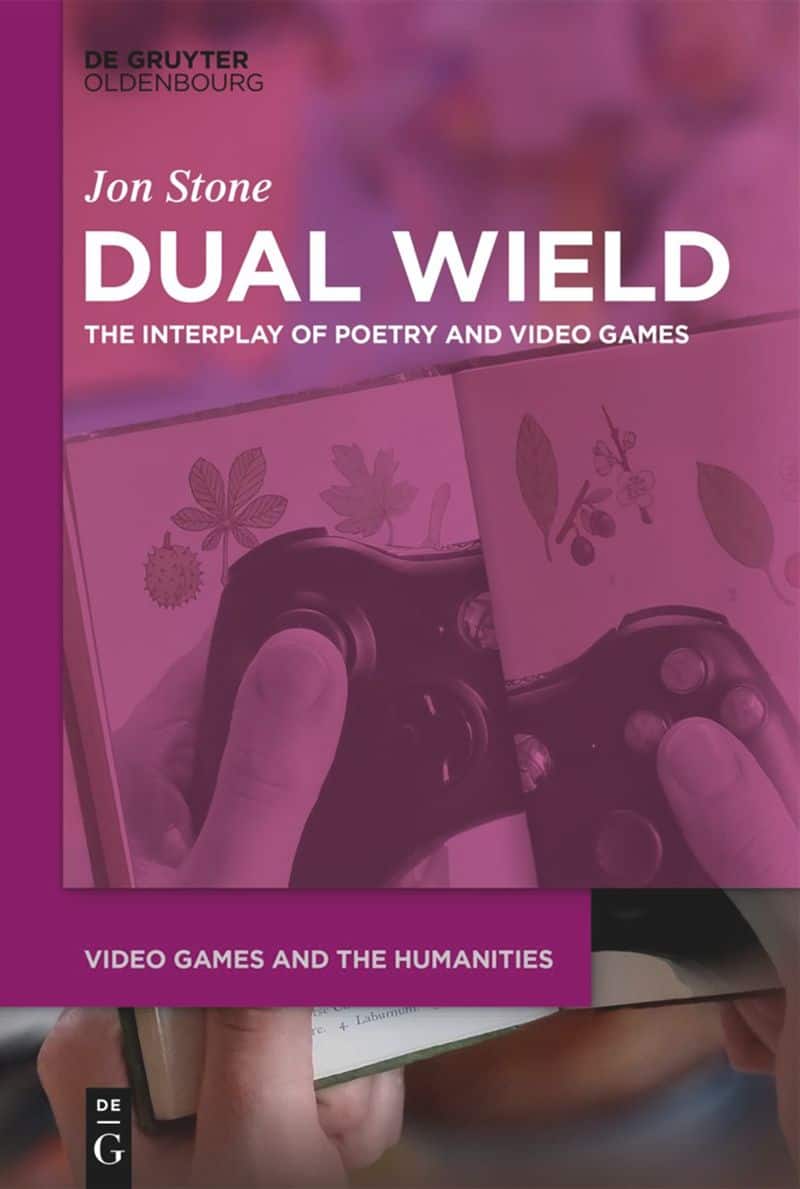Ice Play: What Ice Does in Lyrics, Novels, Toys and Games
It can be cut, stacked, shaped, liquified, swallowed, shattered, and reshaped again and again. Ice as a recurring theme in literature and games provides a canvas for a wealth of phenomena and features of human existence.
At the end of Kurt Vonnegut’s 1963 novel Cat’s Cradle, the experimental weapon ice-nine is unleashed. Nothing can stop its spread; in a matter of moments, the world’s oceans are frozen, along with its rivers, lakes, ponds, puddles and groundwater. I recall this scene every time I set out to write about something that seems important but difficult-to-grasp. Very rapidly, the significance of it, whatever it is, expands in my thoughts, intruding upon every other matter of concern. My page, document or folder fills up, as if with a snowstorm. I know I’m onto something – I just can’t make it fit into a plan or framework. I can’t cover it because it’s covering me. I become lost in it.
“What ice signifies, very often, is absence, nothingness.”
Ice as all-consuming expanse is a recurring theme in literature – what it signifies, very often, is absence, nothingness. In Ana Kavan’s Ice, published four years after Cat’s Cradle, the ice is again busy eating up the whole world. In this case, though, its progress is incremental, causing slow social dissolution. It finally reaches the unnamed protagonist and his quarry in the novel’s closing chapter, just as each gives in to the hopelessness of their situation. The black text on the page stutters into a white plane as the story ends.
Kavan’s ice represents both drug addiction and male sexual violence, Vonnegut’s nuclear war, but both books imagine a volatile, inevitable void lurking at the edges, encroaching on whatever brief haven their characters secure. Ice as death itself. The same is true in Tarjei Vesaas’ The Ice Palace, though here there is also a dangerous allure. Formed from a frozen waterfall, the ice palace draws in eleven-year-old Unn, who has just the previous night confessed to her new friend Siss that she harbours a shameful secret. The palace in which she loses herself is a labyrinth of ice, illuminated in lyrical prose:
The pattern in the ice wall danced in the room, the light shone more strongly. Everything that should have been upright was upside-down – everything was piercingly bright.
The search party cannot locate Unn’s body. Both Siss and the reader are left to intuit the nature of the secret which has encased her forever in its silence. Ice as something beyond our reckoning – so death again, but death approaching in the form of desires we can’t articulate, let alone admit to.
Ice Splinters
Though a second ice age would be deadly for most species on the planet, the shrinkage of ice sheets is both a deadlier and a more immediate threat. For all its seeming power and resilience (ice cores millions of years old have been cut from the ground), ice is brittle and shifting. Last year I published a short pamphlet called Unravelanche. It started life as a series of poems collaged from various books, which I had made as individual Christmas cards for friends and relatives.
What kind of story, I wondered, could these disorderly flurries of text take place in? What about a story of a library that melts (or is broken up) like an ice shelf, leading to a blizzard of fragments of book? My protagonist, trying to trace what remains of the library, of an organised centre of human knowledge, would wrap herself in these fragments:
The hullabaloo of the winds increases hour on hour, along with their verbosity. The ice pilot menaces herself with pronouncements. She hates the cold. She hates the thick and greasy pemmican. She is ever on the cusp of becoming lost […] but the library has called to no one else. There are others who are distantly, coolly aware of it, yes, but for them it is enough to know it exists, to conjure its impression every now and then. She alone is compelled to become enveloped in it.
“The fact that ice disintegrates so readily makes it a symbol of entropy, decay.”
Ice as impermanence teasing stability. Its allure – its beauty, even – lies in its tendency toward structure: naturally formed modernist sculptures made of crystalline lattice. The fact that it disintegrates so readily (so that the ice floes my protagonist moves across are themselves moving, altering her course) makes it a symbol of entropy, decay. Perhaps subconsciously I was thinking of the impossibility of producing anything that will last.
I gave the Ice Pilot another brief outing: a poem of blizzardy fragments again, this time not a collage but a stereogram or ‘magic eye’, with a single haiku-like image anchored at its centre. As a reader, you now embody the ice pilot, squinting through the ice storm (or an icy fog, or a pane of ice) in search of something solid, or real, or permanent.

Ice Dazzles
Ice – or the idea of it – makes for a fascinating toy. It can be cut, stacked, shaved, shaped, licked, liquified, swallowed and smashed, and endlessly, inexpensively reformed. Bright like treasure, silk-skinned like water, but without water’s will to escape.
In Lego’s Ice Planet 2002 playsets, released from 1993 to ‘94, ice is suggested as an advanced sandpit – an environment onto which you can write, through which you can tunnel, out of which you can build. Beauty that can withstand all manner of disturbance. An alien substance to be met with neon-orange chainsaws, crystal-domed satellite stations and thickly-treaded vehicles.
It has a similar attraction in the 1987 Doctor Who story ‘Dragonfire’, which also takes place on a planet of ice. Notably, the cheaply constructed studio sets fail to convey any sense of suffocating cold; instead, sloped ice walls glitter and give off a warm light. The world is one of magical grottos and hiding places. At the climax of the story, the ice-themed villain (white uniform, silver makeup) dies not from hypothermia but by exposing himself to the glare of a star, his face melting like raspberry ripple ice cream.
“Ice makes the already-extravagant even more so.”
Ice makes the already-extravagant even more so, hence the appeal of pantomimes and shows which are advertised as ‘on ice’. As stark backdrop, it lends definition to everything upon it – a property invoked to savage effect in Tim Turnball’s long poem ‘Caligula on Ice’, in which the bloody excesses of Roman gladiatorial games are transposed into a modern ice show. The poem is a sharp-suited satire on the convergence of violence and entertainment in both news and entertainment media, as well as in political campaigning. Turnbull imagines a “voter-stunning opiate” in which animals, criminals, pensioners and cancer patients are slaughtered, real wars fought with tanks, and celebrities and media moguls alike summoned to do battle – all ‘on ice’:
There – bloody and savage beyond belief –
they claw like hellcats round the arena,
each laying in with fists, feet, nails and teeth,
so that it’s hard to judge which one’s the meaner.
This round’s brought to a halt for a respite
when they both slump together, brow to brow,
the combat to resume again next night,
though it’s always going on somewhere, somehow …
Hard not to think, perhaps, of the blue-white glare of our computer screens, against which are set so many of the headlines, horrors and tailored advertisements which we consume every day.
Ice Wounds
Video games are the perfect instrument to combine these different and conflicting characteristics of ice, since they are self-contained roller-rinks of sensory pleasure and simulated violence. What we find, though, is that as the medium has matured, ice-themed levels, stages and zones have evolved from emphasising the physicality of ice to embracing its symbolism. Video game designers have extended their ambitions: where previously they meant chiefly to entertain players, they now hope to speak to them as well.
In Nintendo’s Ice Climber (1984), frozen peaks are ascended by breaking and standing upon coloured ice blocks – an example of ice as utility. But sharp icicles also form on the ceiling, dropping onto the player and hurting them if they make contact. In the platform and racing games of the 1990s, ice continued to play the role of hazard. As a low-friction surface, it sent players skidding into chasms or unbreachable walls. As weaponised mist or missile, it was used to flash-freeze Sonic the Hedgehog, as well as the various enemies of Mortal Kombat’s Sub Zero (Midway Games, 1992) and the young downslope racers of Snowboard Kids (Racjin, 1997). By the time of Core’s third Tomb Raider game, in 1998, players had to contend with ‘exposure metres’, a visual representation of how close their avatar was to dying from the cold.
But while these uses for ice have not been abandoned, in the 21st century the pain is inflicted at a more existential level. Games like Red Dead Redemption 2 (Rockstar, 2018) use ice and snow environments at key points in their narratives to underline themes of loss and disorientation. In Disco Elysium (ZA/UM, 2019), a title almost entirely centred on conversations with a large and impressively developed cast, the frozen north of Rue de Saint-Brune is notably depleted of people to talk to, or anything to do at all. The shore-ice backdrop is digitally painted in broad strokes – subtle shades of pink and yellow, as well as blue, emphasising the unreality of the game world. The atmosphere shifts from one of grimy urban realism to eerie uncertainty. The player’s murder investigation stalls amid their recognition that the entire district is badly neglected. A lone researcher in an abandoned church thinks she has found, under the ice, a hole in the fabric of the universe.
I Am Setsuna, a 2016 role-playing video game by Tokyo RPG Factory, is set entirely in an icebound landscape, and sombre throughout. Setsuna (whose name roughly translates to ‘sorrow’) is a girl chosen as a ritual sacrifice to appease gods and demons that threaten the region. The player, acting both through Setsuna herself and a growing group of retainers, is limited to helping her on her journey – she is resolute about reaching the Last Lands and ending her life there.

The story in some ways works as a much more elaborate, extended fantasy version of Unn’s pilgrimage to the ice palace. Here, the typically barren game-world of the Japanese RPG (a necessary result of the genre’s commitment to letting the player roam far and wide) seems far more deliberate and apposite – as in Disco Elysium, the very blankness of the ice alludes to the empty page, inviting the player to write themselves into the story.
Finally, 2018’s multi-award-winning Celeste is Ice Climber revisited and refined. Enacting the role of Madeline, the player must persevere through icy winds, across icy gorges and through a haunted hotel in their quest to reach the peak of Mt. Celeste. In doing so, they also escape, confront and ultimately reconcile with Madeline’s fear of abandonment, manifested as ‘Badeline’, a mirror-image in deep violets, with pale skin (reminiscent of the discolouration of a frozen corpse). The mountain itself, its dangers and apparitions, acts as a representation of the barriers to recovery from real-life traumatic episodes.

Ice Dreams
In Dante’s Inferno, the very centre of hell – the ninth circle – is a frozen lake. The further one travels into it, the deeper the sinners (all betrayers of one sort or another) are submerged in ice. It makes sense that such a lake would be enticing: what lies on the other side of it, and what at the bottom? Does ice operate here as metaphor for our pursuit of the unknown and the imagined, a pursuit that pulls us away from all of our earthly ties?
I’ve been working on a ludokinetic poem (a poem which can be played) titled Ice Dive, which you can test for yourselves by following this link. In this poem the reader, who is also the player, has one simple task: they must choose when to stop their descent into the icy water. The longer they wait, the greater chance that the cold and darkness overcomes them, that their expedition will end in failure. Equally, the longer they wait, the more of the poem unfolds, and the more chance they have to return with one of seven minor revelations. The poem is ordered differently each time; its ponderous upward crawl simulates a drop into some kind of inner consciousness. Ice as canvas, as a mystery that is written in the same moment it is discovered.
Check out this related title from De Gruyter
[Title Image by Greg Rosenke via Unsplash]
